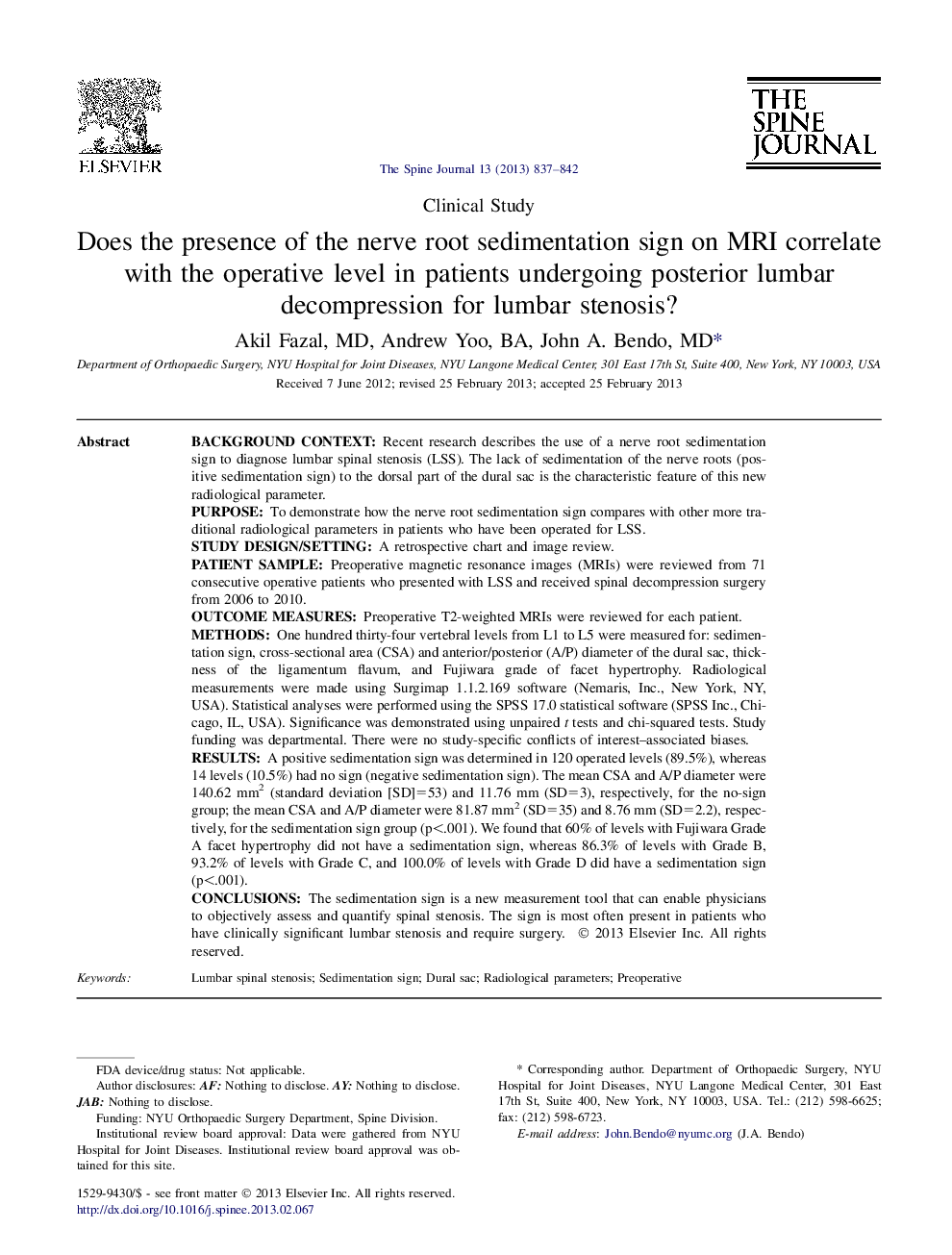| کد مقاله | کد نشریه | سال انتشار | مقاله انگلیسی | نسخه تمام متن |
|---|---|---|---|---|
| 4096954 | 1268574 | 2013 | 6 صفحه PDF | دانلود رایگان |

Background contextRecent research describes the use of a nerve root sedimentation sign to diagnose lumbar spinal stenosis (LSS). The lack of sedimentation of the nerve roots (positive sedimentation sign) to the dorsal part of the dural sac is the characteristic feature of this new radiological parameter.PurposeTo demonstrate how the nerve root sedimentation sign compares with other more traditional radiological parameters in patients who have been operated for LSS.Study design/settingA retrospective chart and image review.Patient samplePreoperative magnetic resonance images (MRIs) were reviewed from 71 consecutive operative patients who presented with LSS and received spinal decompression surgery from 2006 to 2010.Outcome measuresPreoperative T2-weighted MRIs were reviewed for each patient.MethodsOne hundred thirty-four vertebral levels from L1 to L5 were measured for: sedimentation sign, cross-sectional area (CSA) and anterior/posterior (A/P) diameter of the dural sac, thickness of the ligamentum flavum, and Fujiwara grade of facet hypertrophy. Radiological measurements were made using Surgimap 1.1.2.169 software (Nemaris, Inc., New York, NY, USA). Statistical analyses were performed using the SPSS 17.0 statistical software (SPSS Inc., Chicago, IL, USA). Significance was demonstrated using unpaired t tests and chi-squared tests. Study funding was departmental. There were no study-specific conflicts of interest–associated biases.ResultsA positive sedimentation sign was determined in 120 operated levels (89.5%), whereas 14 levels (10.5%) had no sign (negative sedimentation sign). The mean CSA and A/P diameter were 140.62 mm2 (standard deviation [SD]=53) and 11.76 mm (SD=3), respectively, for the no-sign group; the mean CSA and A/P diameter were 81.87 mm2 (SD=35) and 8.76 mm (SD=2.2), respectively, for the sedimentation sign group (p<.001). We found that 60% of levels with Fujiwara Grade A facet hypertrophy did not have a sedimentation sign, whereas 86.3% of levels with Grade B, 93.2% of levels with Grade C, and 100.0% of levels with Grade D did have a sedimentation sign (p<.001).ConclusionsThe sedimentation sign is a new measurement tool that can enable physicians to objectively assess and quantify spinal stenosis. The sign is most often present in patients who have clinically significant lumbar stenosis and require surgery.
Journal: The Spine Journal - Volume 13, Issue 8, August 2013, Pages 837–842